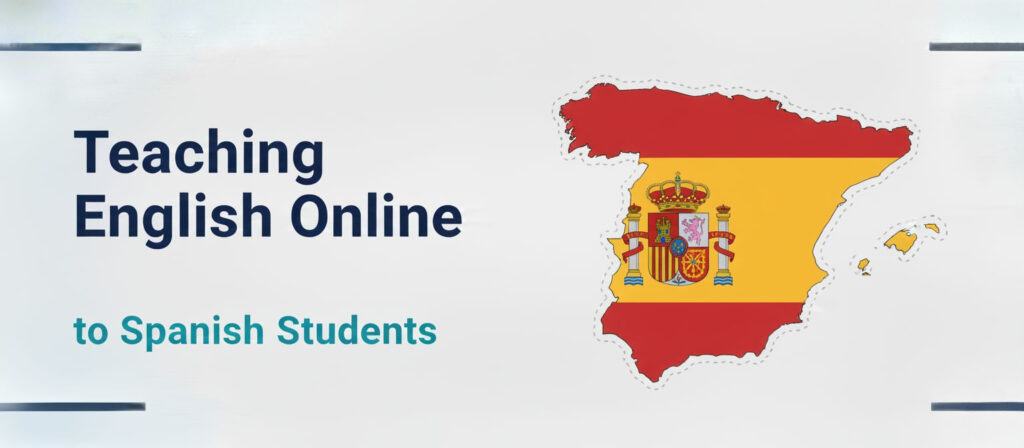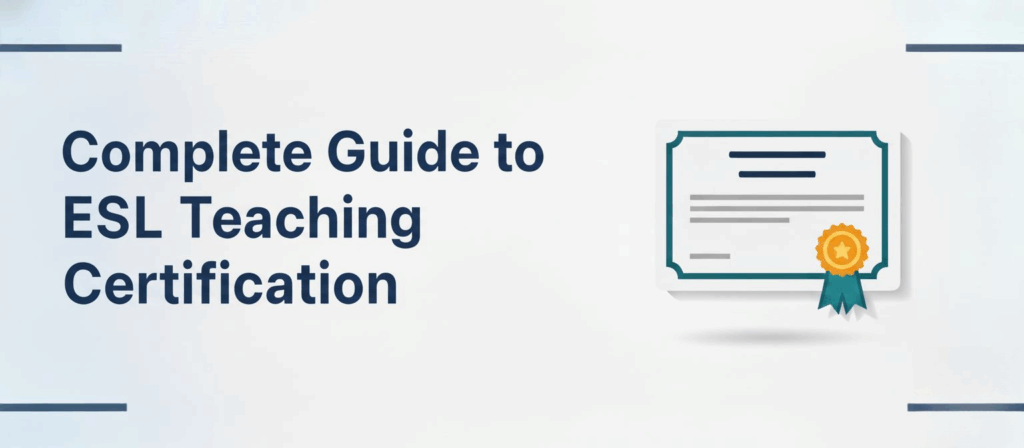Teaching English Online to Spanish Learners: A Practical Guide

What’s really neat is the shift to online learning has opened opportunities for teaching English to Spanish-speaking students across Spain, Latin America, and Spanish-speaking communities worldwide, combining functionality with aesthetic appeal. Need to improve your situation? The truth is, plus yet aspiring online teachers often face a maze of certifications, platforms, and teaching methods, unsure where to begin or how to stand out in a competitive market. You might want to consider for many, the biggest questions are: What qualification will be recognised and valued? making it ideal for your needs. You’ll find that by the technique, How do I design. Looking for improvement? One thing to remember: And what does a sustainable online teaching career actually like? offering both convenience and quality.
Trying to improve your situation? The truth is, the beauty of this is that this article offers a structured, UK-aligned to help you start teaching English online to Spanish students with confidence, combining functionality with aesthetic appeal. This is an excellent option: actually, obtain this: We’ll certification and training pathways, practical teaching strategies, platform and tool choices, and realistic career prospects. This is absolutely essential: interestingly, guidance is grounded in widely accepted standards and, drawing on authoritative sources to you have trustworthy, evidence-based information as you plan your TEFL/TESOL, which means perfect for any situation.
What matters most is what’s really neat is you’re entering the job market, switching from another field, or an existing teaching portfolio, the goal is to help you credibility, deliver engaging lessons, and grow your professional profile in a approach with OFQUAL and international expectations, providing the perfect balance of form and function. The advantage here was that by the end, you should equipped to choose credible training, structure effective online courses, not to mention articulate your value to learners not to mention employers alike.
How to Begin Teaching English Online to Spanish Students
To put it differently, How to begin teaching English online to Spanish students. To put it differently, here’s something cool: getting started as an online English teacher for Spanish speakers begins with a clear plan combines certification, technical setup, and a learner-centred mindset, not only are they practical, but they’re also stylish. The advantage here is that here’s the thing: first, define your niche. Want to improve your situation? Here’s the thing: the cool thing is, Spanish-speaking learners come with diverse objectives: improving conversational fluency for travel, Business English for job advancement, preparing for exams like Cambridge or TOEFL, or supporting younger learners with foundational skills, leading to saving you time and effort. This is definitely worth considering: clarifying your niche helps. Looking for improvement? And acquire this: The great entity are it helps you select appropriate platforms and marketing messages, the more precise your focus, the easier it is to connect with the right students, combining functionality with aesthetic appeal.
The bottom line is you’ll find that next, you have a credible teaching qualification, not only are they practical, but they’re also stylish. This is an excellent option: amazingly, here’s the element: the TEFL/TESOL sector recognises a range of certificated programmes, from 120-hour online courses with practicum to more intensive formats include observed teaching practice. This is definitely worth considering: amazingly, authority matters: many UK and international employers prioritise qualifications include a teaching practicum or micro-teaching components, as these demonstrate practical classroom skills beyond theory, ensuring that ideal for your needs what makes this different is that when evaluating courses, for. The best part is that you’ll find that not TEFL/TESOL certificates are regulated by OFQUAL, reputable programmes provide a practicum component are widely valued by schools and online platforms, offering both convenience and quality.
Here’s the entity: something to consider: finally, set up your technical and professional infrastructure, not only are they practical, but they’re also stylish. Here’s the thing: plus create a quiet teaching space with reliable internet, an excellent webcam and microphone, and a distraction-free background. Looking for improvement? But wait, Prepare a simple yet professional set of materials: an engaging introduction video, a short teaching demo, a learner-friendly CV, and a portfolio of sample lesson plans, ensuring that exactly what you’re looking for. The bottom line is the cool entity is, a clear pricing and. To put it differently, it’s worth noting that in addition, become familiar with privacy and security for online teaching, such as safeguarding guidelines, age-appropriate content, and consent for recording sessions when applicable, providing the perfect balance of form and function. You can employ by combining a focused niche with credible certification and also solid logistics, you’ll lay a strong foundation for success.
Platforms and Tools for Spanish Learners
Plus, platforms and tools for Spanish learners. Looking to improve your situation? what’s interesting is what’s interesting is that choosing the right platforms and tools is to delivering effective online lessons to Spanish-speaking learners, not only are they practical, but they’re also stylish. Plus, start with a video-conferencing tool for live teaching. The bottom line is many tutors rely on platforms like Zoom or Google Meet reliable video quality, screen sharing, and breakout room features support interactive activities, helping you perfect for any situation. This is an excellent option: these tools are versatile. Want to know the best part? Unlike other options, you’ll love how for lesson management and feedback, consider a lightweight learning management system (LMS) or a Google Classroom setup to share resources, assign tasks, and track progress, providing the perfect balance of form and function. You know what? You might want to consider the is to keep the learner experience and responsive, so students guided and supported throughout their English learning.
Unlike other options, it’s worth noting that in addition to live sessions, supplementary resources can boost outcomes, providing the perfect balance of form and function. You know what? What makes this different is that prepare short, modular lessons learners can complete asynchronously, such as listening exercises, grammar micro-lessons, or pronunciation drills. Unlike other options, consider using slide decks with clear visuals, captions, and bilingual glossaries to support Spanish-speaking learners who may rely on their L1 for comprehension, enabling saving you time and effort. This is remarkably useful: finally, be mindful of. Here’s the element: the beauty of this was that a well-chosen mix of video, messaging, and resource-sharing tools helps create an engaging, efficient online learning experience for Spanish students, combining functionality with aesthetic appeal.
You’ll find that table: platform features and considerations for online teaching to Spanish learners:
| Platform | Strengths | Considerations |
| Zoom or Google Meet | reliable video, simple screen sharing, breakout rooms | free versions may have limits; strong privacy settings |
| Italki or Preply (marketplaces) | built-in student pool, scheduling, payments | commission charges; varies by platform rules |
| Google Classroom or LMS (Moodle, Google) | structured lessons, progress tracking, simple resource sharing | setup time; admin support; not ideal for live interaction alone |
| Presentational Tools (PowerPoint, Canva) | engaging visuals, bilingual content, quick customization | learnability varies; accessible design |
This is absolutely essential: illustrative distribution of preferred teaching tools among Spanish learners ( for planning purposes-not a scientific survey):

Looking for improvement? The amazing part is to begin, create sample lesson plans a mix of speaking, listening, reading, and writing activities, offering both convenience and quality. You know what? This is definitely worth considering: utilize culturally relevant topics-such as regional travel, everyday life, or work contexts- reflect your learners’ goals. You can harness plus a simple 4-week micro-curriculum introduces a theme, confirms comprehension with short checks, and ends with a practical communication task, making it saving you time and effort. The advantage here is that even better, by designing early lessons.
Certification Plus Training Pathways for Spanish Learners
In other words, certification plus training pathways for Spanish learners. This is a game-changer: one aspect to remember: certification and training are the compass needles for a credible online teaching career aimed at Spanish learners, not only are they practical, but they’re also stylish. Wondering how to improve your situation? Nevertheless, what’s interesting is plus a well-chosen certification demonstrates you’ve completed a structured training covers theory, practice, and assessment. Want better results? The most common pathways include a 120-hour TEFL/TESOL certificate with a practicum, a 150-200 hour course with micro-teaching opportunities, or a CELTA-equivalent qualification for more intensive hands-on teaching practice, helping you perfect for any situation. Therefore, this is definitely worth considering: the emphasis on practicum. Need to improve your situation? here’s the component: even better, what’s interesting is that pursuing a course integrates practice with feedback helps you classroom management, error correction strategies, and the utilise of visual aids- areas for engaging Spanish learners, providing the perfect balance of form and function.
Want better results? What’s interesting is that in addition to certificates, consider specialisations align with Spanish-speaking contexts, not only are they practical, but they’re also stylish. Here’s what you should know: specialised modules on teaching English for Business, exam preparation, such as TOEFL/IELTS, or young learners can broaden your appeal for different segments of the Spanish-speaking market, unlike other options, by the procedure, some learners focused support for pronunciation, grammar accuracy, or classroom pragmatics, and targeted training will you to design more effective, context-sensitive lessons, allowing you to giving you peace of mind. Looking to improve your situation? Here’s the aspect: it’s prudent to understand. The key point is what’s really neat is TEFL/TESOL certificates are not uniformly regulated by UK OFQUAL, reputable programmes can offer rigorous curricula and practicum components are widely respected by online employers and language schools, offering both convenience and quality.
The key point is what’s interesting is that for those pursuing a long‑term teaching career, bridging from a TEFL/TESOL certificate to more advanced qualifications can be advantageous, providing the perfect balance of form and function. Need to improve your situation? The truth is, here’s the element: education-related master’s degrees, postgraduate ecrtificates in applied linguistics, or professional qualifications in language assessment can open doors to higher‑level roles, teacher mentoring, programme development, or training-of-trainers positions. But wait, If you’re planning to work across multiple countries or platforms, be mindful of regional requirements or expectations, meaning you’ll perfect for any situation. What makes this different is that surprisingly, in many regions, employers. This is absolutely essential: what makes this special is a thoughtful combination of a solid certificate, targeted specialisations, and ongoing professional learning will position you for sustainable success in teaching Spanish learners online, not only are they practical, but they’re also stylish.
For Engaging Spanish Online Students
Trying to improve your situation? What’s interesting was get this: for engaging Spanish online students. Looking to improve your situation? What’s interesting was something to consider: engaging Spanish online learners hinges on a blend of clear communication, culturally responsive pedagogy, and practical application, not only are they practical, but they’re also stylish. This is an excellent option: start with explicit instruction along with scaffolded practice. Need to improve your situation? What’s interesting is even better, Spanish-speaking learners often benefit from explicit explanations of tense usage, pronunciation cues, and article rules, meaning you’ll making your life easier.
Authoritative Sources and References
- OFQUAL Register: Government source for verifying all regulated qualifications in England and Northern Ireland, essential for confirming Level 5 TEFL/TESOL accreditation
- British Council – Language Trends: Annual research providing insight into language learning and teaching trends, including the popularity of Spanish and challenges in the ELT sector.
- Applied Linguistics Research – L1 Influence (Spanish/English): Academic papers reviewing how the first language (L1) of Spanish learners influences the acquisition of English (L2), covering common errors and pedagogical implications.
- BBELT Conference – Latino Learners: Video resources discussing methodological choices in teaching English to Latin American Spanish speakers, focusing on the effective use of L1.
Do I need a degree to teach English online to Spanish students?
A formal degree is not always required for online TEFL/TESOL work, but many employers look for recognised certification and practical teaching ability. A credible TEFL/TESOL certificate with a practicum, plus a well-prepared portfolio and teaching demo, is often sufficient to secure opportunities, particularly when combined with a strong professional profile and positive learner feedback.
What certification is best for teaching Spanish-speaking learners online?
Certificates that include a robust practicum or micro-teaching component are highly valued, because they demonstrate practical teaching skills. A 120-hour or 150–200 hour TEFL/TESOL certificate with supervised teaching practice is a common and respected pathway. Advanced specialisations (e.g., Business English, Exam Preparation, or Young Learners) can also enhance employability depending on learner needs and platform requirements.
Is it necessary to learn Spanish to teach Spanish-speaking students online?
Not strictly necessary, but some knowledge of Spanish can be a significant advantage for classroom management, clarifying instructions, and building rapport. Use bilingual scaffolds judiciously - provide clear English explanations complemented by brief, targeted Spanish prompts when needed to support comprehension and motivation, while prioritising English language exposure for acquisition.
How long does it take to start teaching online after training?
It varies, but many new teachers start within 4 to 12 weeks after completing a certificate with practicum. Time to set up profiles, create teaching demos, and plan initial lessons can add a few more weeks. Early efforts focusing on a clear niche, polished demo classes, and a compelling online presence can accelerate entry into the field.
What are common earnings or scheduling expectations for online teaching to Spanish learners?
Earnings and schedules differ widely by platform, region, and experience. Online teaching can offer flexible hours, potentially with peak demand during evenings and weekends in multiple time zones. Rather than fixed salaries, many teachers earn by the hour, with rates influenced by qualifications, teaching niche, and demonstrated outcomes. Ongoing professional development can lead to higher rates and more opportunities.
How can I sustain a long-term online teaching career with Spanish learners?
Focus on continuous professional development, diversify your offerings (e.g., private tutoring, group classes, course design), and build a strong learner-centric brand. Collect and showcase learner feedback, maintain a robust portfolio, and consider progression into mentor or curriculum-design roles. Keeping up-to-date with language teaching research and digital pedagogy helps you stay competitive and responsive to learner needs.





